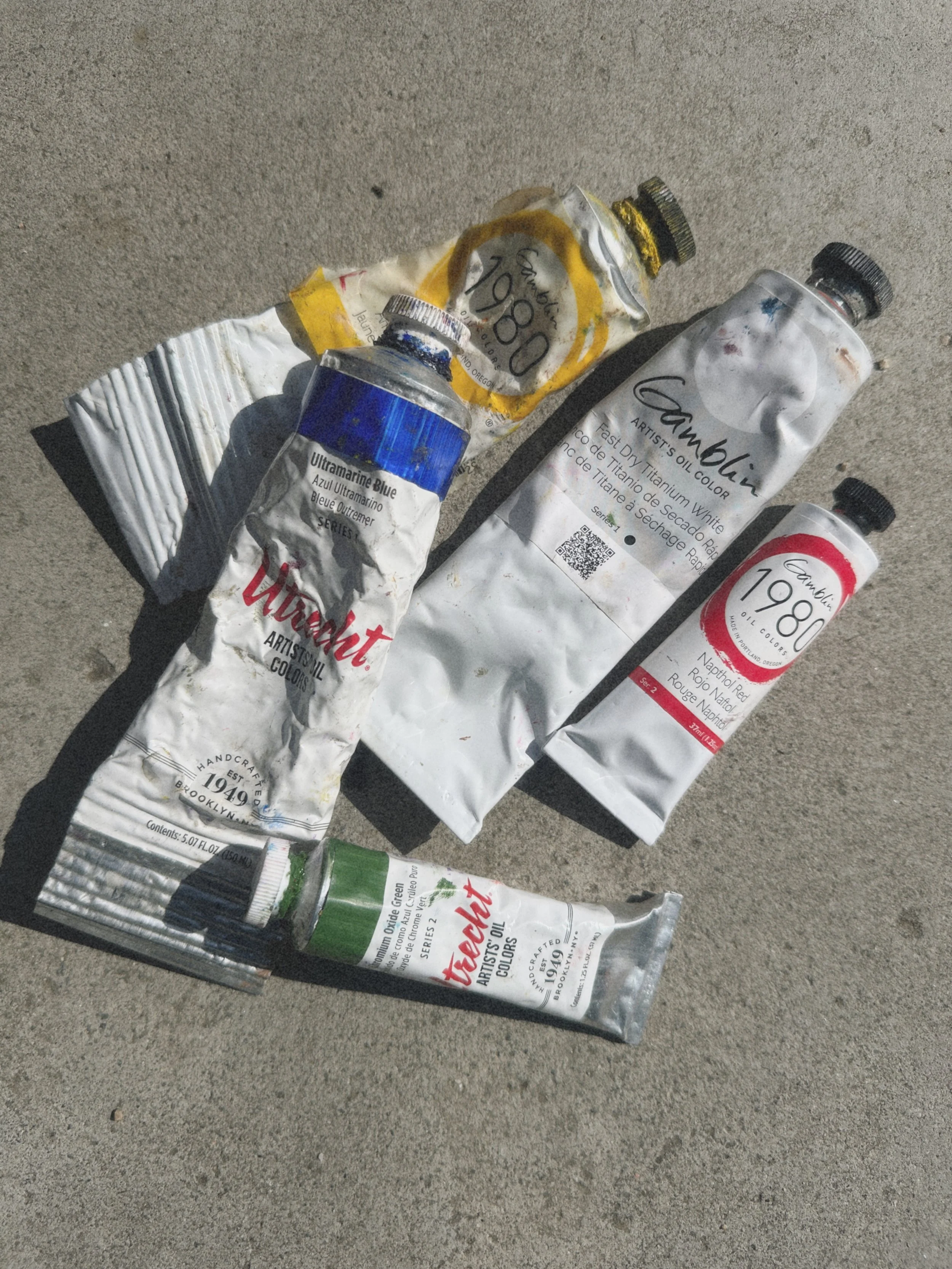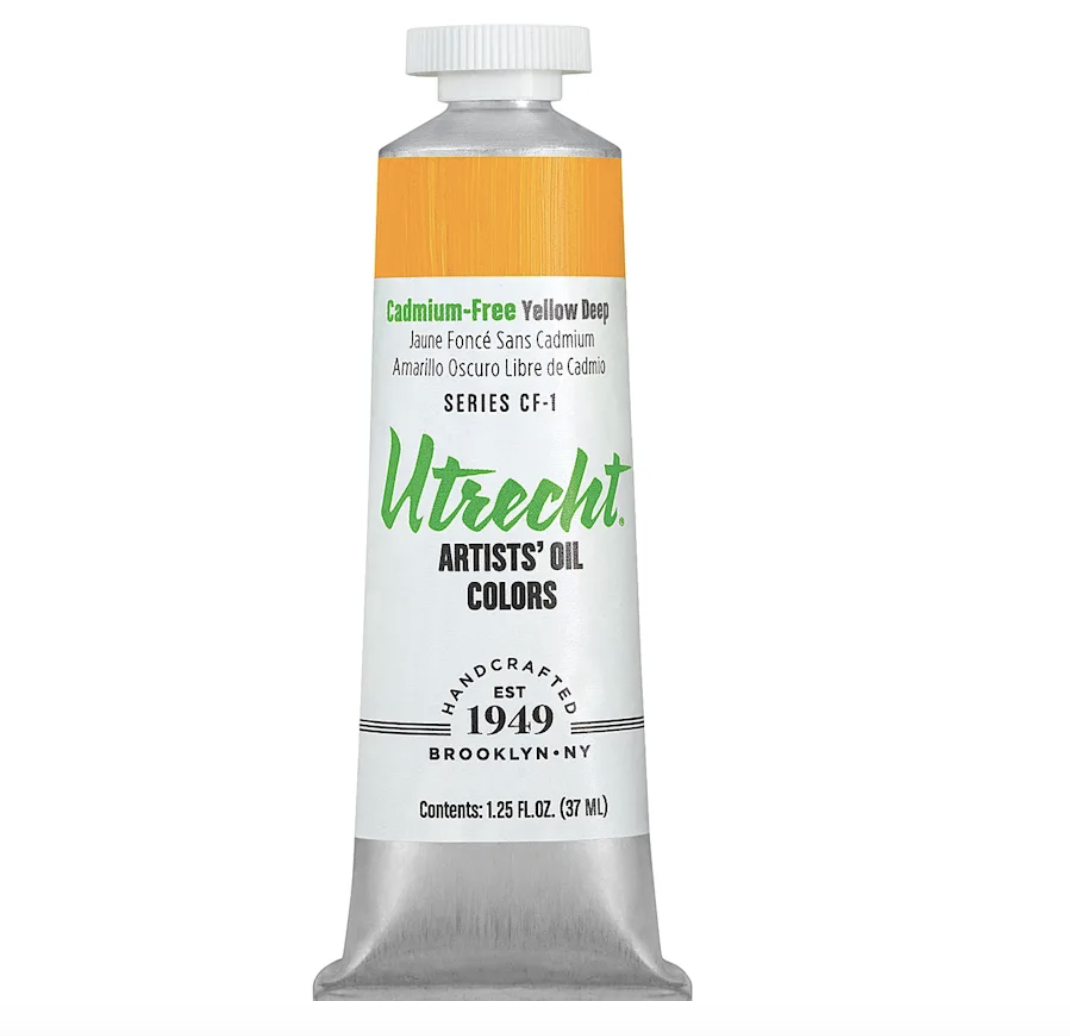Non-Toxic Oil Painting Supplies
Disclaimer: I am by no means a medical professional. If you happen to have any specific medical conditions or sensitivity to oil paint, please consult your doctor. These are simply my recommendations to try if you are looking for a non-toxic option for general purpose oil painting.
Is all oil paint toxic? How toxic is it? Let’s dig in.
There are several materials in oil painting that can be toxic. These can include certain pigments, solvents and mediums.
Pigments: Not all pigments are toxic. It really comes down to what the pigment is and what it’s made from. The pigments that cause more concern are pigments that contain heavy metals and lead. These toxins are more concerning if you apply a large amount on your skin. By covering up with gloves, you’re protected from any pigments that you use. These include:
Cadmium-based colors, Lead White, Naples Yellow, Cobalt Blue, Veridian
Solvents: When it comes to solvents, the main concern are the airborne particles and fumes, whether they have an odor or not. If you use solvent such as turpentine or gamsol, make sure to paint in a well-ventilated space. Wearing gloves is always a good idea to prevent solvents from absorbing into your skin as well.
Mediums: Some oil paint mediums contain solvents. Whether absorbing it on your skin or breathing in fumes, it’s something to keep in mind. Protection would include the same measures as working with solvents.
Wear gloves. Paint with the windows open. Don’t snack + paint.
In general, if you are a hobby oil painter, there isn’t too much concern as long as you are using the materials as directed. Wear vinyl gloves when handling paint and don’t be snacking while you’ve got paint all over your gloves/hands. Always paint in a well-ventilated space. I open my studio door and a couple windows for some nice cross ventilation. These practices alone can make a big difference in staying safe when working with oil paints.
Toxic-Free Solvents/Paint Thinner
-
This company specializes in created non-toxic oil painting solvents, thinners and mediums for artists.
Many of their materials contain stronger scented ingredients such as lavender oil, so keep that in mind.
View their selection here.
-
This paint thinner is another great option that you can easily find in your local art store or on Amazon.
View the selections here.
Toxic-Free Paints
-
A great option for enjoying the use of cadmium-based paints is the invention of cadmium-free pigments (a synthetic version of a traditionally cadmium-based pigment). In my experience, they don’t always imitate the original pigments perfectly, but can work for a toxic-free option.
Find Cadmium-Free paints here.
-
If you are trying to completely avoid any solvents, trying out a water-based oil can be an option to try. No oils or solvents necessary - just water (similar to acrylics).
Find a selection of water-based oil paint here.
Toxic-Free Mediums
-
Are all examples of non-toxic oils. They are natural, plant-based binders to use in your paint mixtures.
-
Several paint manufacturers have now developed solvent-free gels, which serve as a toxic-free painting medium.
Find a solvent-free gel option here.
-




